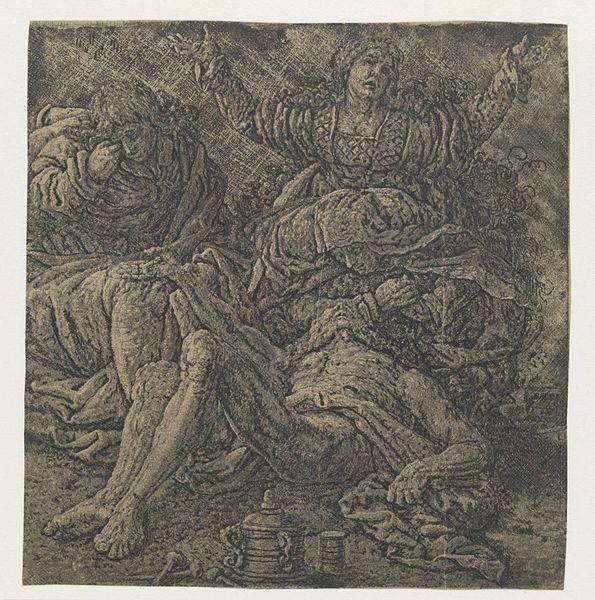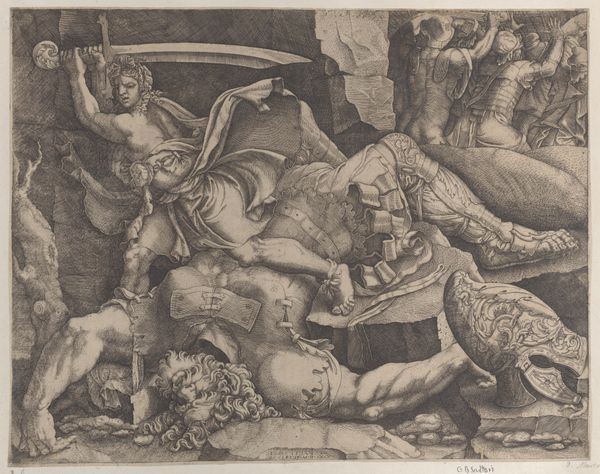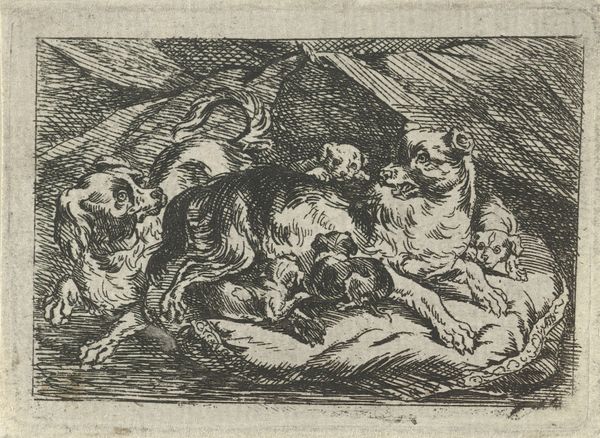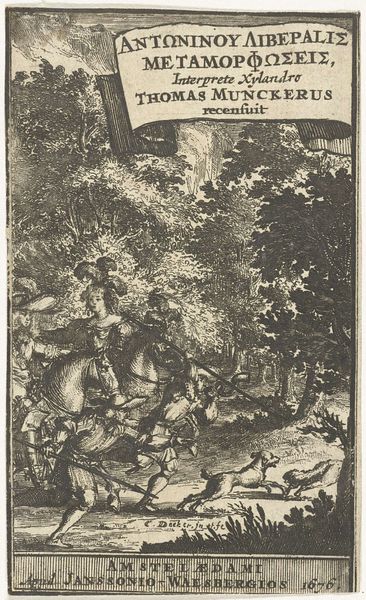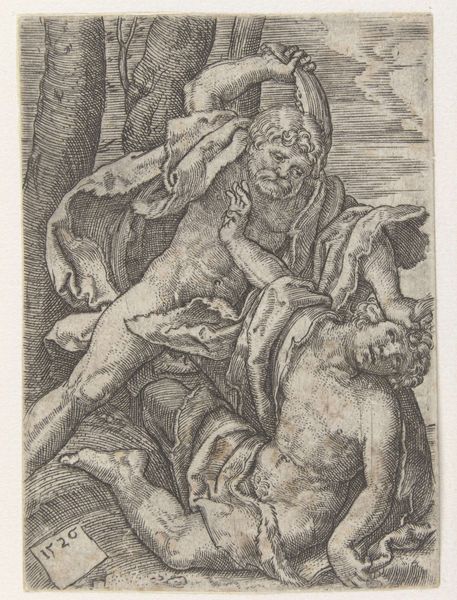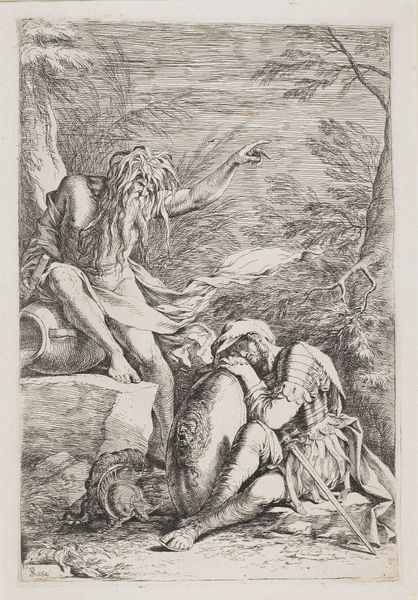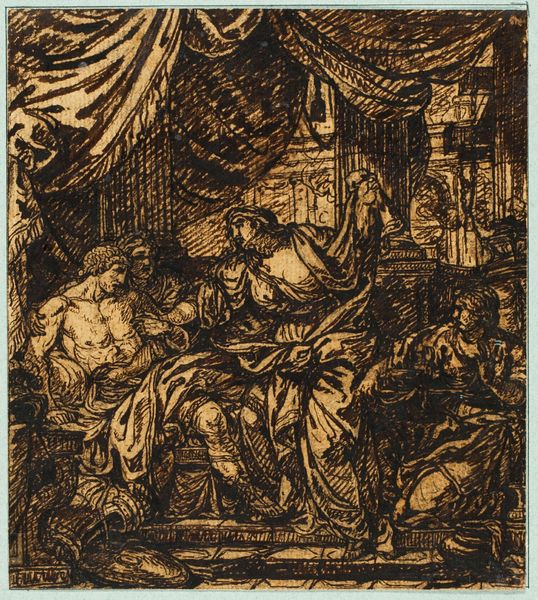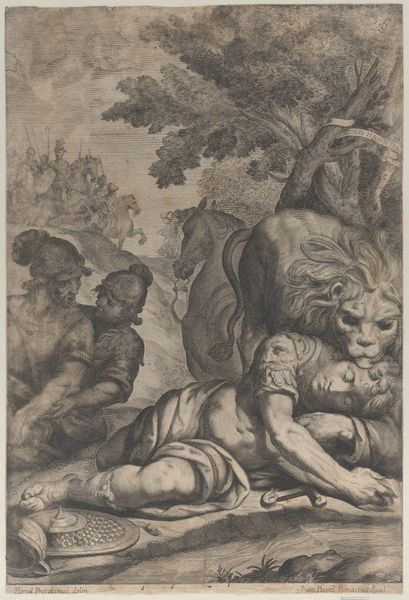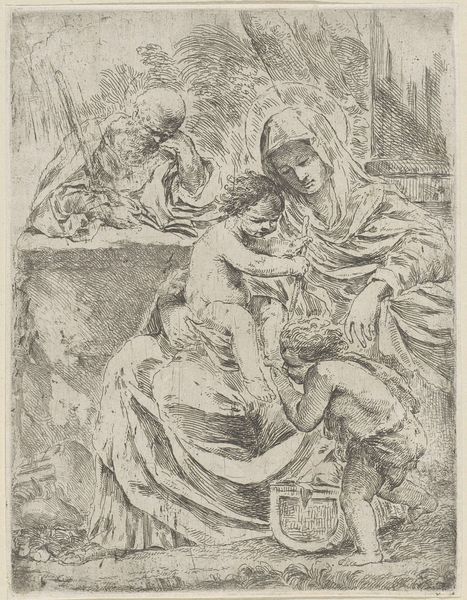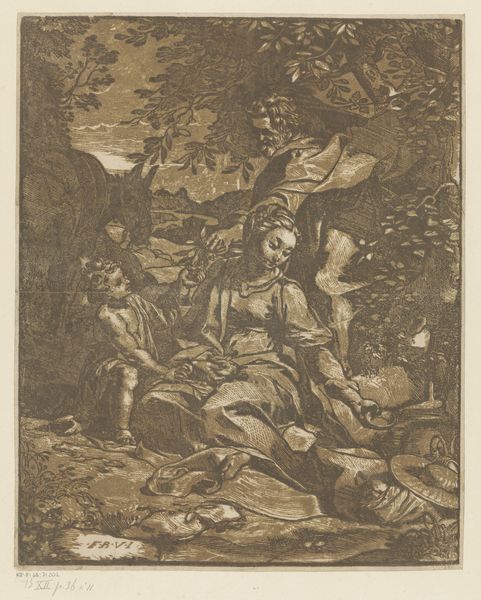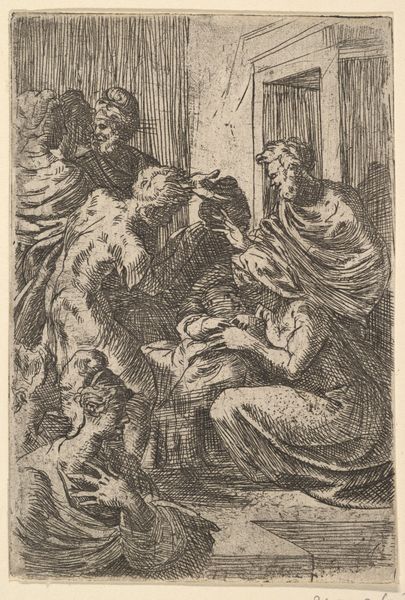
drawing, print, etching, paper
#
drawing
#
baroque
# print
#
etching
#
sketch book
#
landscape
#
figuration
#
paper
#
history-painting
Dimensions: 163 × 156 mm (image/sheet, trimmed within platemark)
Copyright: Public Domain
Editor: Here we have Hercules Segers’ "The Lamentation," an etching dating back to around 1607. The somber scene and heavy use of line work create an atmosphere of intense grief. What do you see in this piece? Curator: Segers’ "Lamentation" isn't simply a depiction of sorrow; it's a powerful statement about social upheaval and spiritual crisis during the early 17th century. The dense, almost claustrophobic composition, achieved through his innovative etching techniques, mirrors the feeling of oppression and confinement experienced by many during that period. Notice how the figures are positioned; they seem trapped within the frame, their gestures of despair reaching outward but ultimately contained. Editor: That's interesting. So, you're saying the artistic choices reflect the political climate? Curator: Precisely. Segers lived through a time of intense religious and political conflict. The Eighty Years’ War was raging, and societal norms were being challenged. Etching, as a printmaking medium, also allowed for wider distribution. It’s possible Segers aimed to reach a broader audience with his commentary on the suffering of the masses. How do the figures relate to each other, in your opinion? Editor: They seem very disconnected, each lost in their own world of grief. It's powerful, but also kind of bleak. Curator: Indeed. Consider the traditional iconography of lamentation scenes, typically portraying communal mourning and support. Segers disrupts this tradition by presenting isolated figures, highlighting the individual experience of trauma and potentially questioning the efficacy of established social structures in providing solace. Editor: I never would have looked at it that way. Seeing it as a reflection of societal upheaval makes the emotional intensity of the piece even more impactful. Curator: Exactly. By engaging with the historical and social contexts surrounding the work, we can unlock new layers of meaning and relevance that speak to our present moment. Art allows a continued dialogue across generations.
Comments
No comments
Be the first to comment and join the conversation on the ultimate creative platform.
